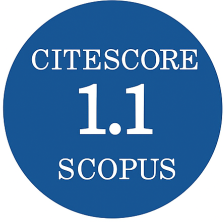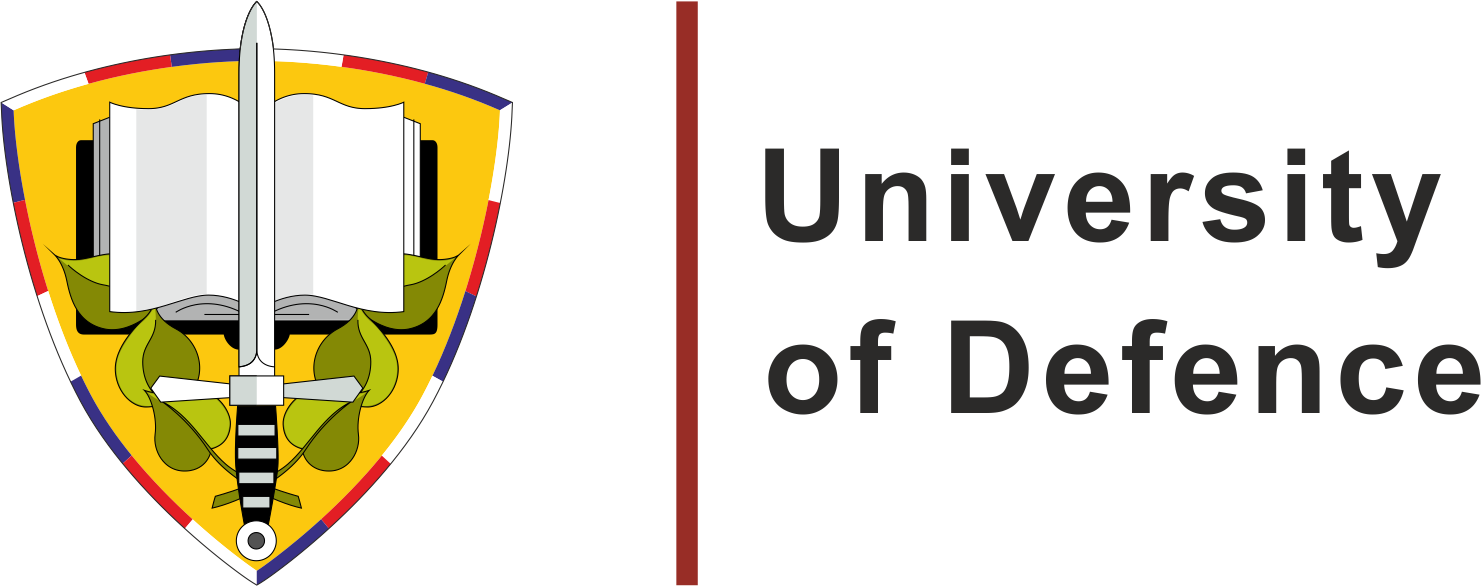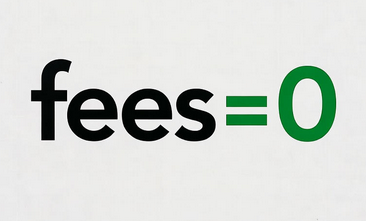Selecting Double-Base Propellants for a 120 mm Mortar Rocket Assisted Projectile through DoE
DOI:
https://doi.org/10.3849/aimt.01969Keywords:
rocket assisted projectile, design of experiments, characteristic velocity, low vulnerability ammunition, green propellantsAbstract
Range extension of a 120 mm mortar projectile can be attained by a rocket motor within the grenade body. This study deals with the design of experiments-based methodology to identify double-base propellant compositions conceptually feasible for such a motor, from a thermochemical viewpoint. Formulations were defined under low vulnerability and green principles, using Minitab® Statistical Software, following mixture design techniques to account for intrinsic constraints. The thermochemical behavior of these formulations was simulated with a specialized software, taking theoretical characteristic velocity c* as a performance indicator. An empirical model was then fitted, permitting the identification of a set of favorable compositions leading to c* enhancement, regarding a reference double-base propellant, thus unveiling the design possibility of rocket motor downsizing.
References
DAVENAS, A. The Main Families and Use of Solid Propellants. In: DAVENAS, A. (ed.). Solid Rocket Propulsion Technology. Oxford: Pergamon Press, 1993. pp. 329–367. ISBN 0-08-040999-7.
MANSON, M.P. Guns, Mortars & Rockets. 2nd ed. London: Brassey’s Ltd, 1997. ISBN 1-85753-172-8.
SUTTON, G.P. and O. BIBLARZ. Rocket Propulsion Elements. 9th ed. Hoboken: Wiley, 2017. ISBN 978-1-1187-5388-0.
ARKHIPOV, V. and K. PERFILIEVA. Optimization of Construction of the Rocket-Assisted Projectile. In: MATEC Web of Conferences, 2017, 110, pp. 8–13. DOI 10.1051/matecconf/201711001003.
SARHAN, A.M., M.A. EI-SENBAWI and A. NAFEA. Rocket Assisted Projectiles – A Computational Analysis of Trajectory. In: International Conference on Aerospace Sciences and Aviation Technology. Cairo: ASAT, 2003, 10, pp. 267–277. DOI 10.21608/asat.2013.24426.
LIPANOV, A.M., S.A. KOROLEV and I.G. RUSYAK. Optimization of Aerodynamic Form of Projectile for Solving the Problem of Shooting Range Increasing. In: AIP Conference Proceedings. Novosibirsk: AIP, 2017, 1893(1), 030085. DOI 10.1063/1.5007543.
KIM, K.-M., J.-H. CHO and D.-J. JEONG. Study on Composite Solid Propellants for Rocket Assisted Projectile. Journal of the Korean Society for Aeronautical & Space Sciences, 2010, 38(11), pp. 1081–1086. DOI 10.5139/jksas.2010.38.11.1081.
UDDIN, M.N., H.K. BHUIYAN and G. MOSTOFA. An Experimental Investigation of Long-Range Projectiles under Different Wind Conditions. American Journal of Mechanical Engineering, 2021, 9(1), pp. 7–17. DOI 10.12691/ajme-9-1-2.
FLEEMAN, E.L. Propulsion Considerations in Tactical Missile Design. In: SCHETZ, J. (ed.). Tactical Missile Design. Blacksburg: American Institute of Aeronautics and Astronautics, Inc., 2006. pp. 81–139. ISBN 978-1563477829.
ARFSD-TR-99002 - 120-mm Ammunition Feasibility Assessment for Light Artillery [Technical Report] [online]. 2000 [viewed 2024-11-22]. Available from: https://apps.dtic.mil/sti/tr/pdf/ADA376461.pdf
HERVÉ, A. Double-Base Propellants. In: DAVENAS, A. (ed.). Solid Rocket Propulsion Technology. Oxford: Pergamon Press, 1993. pp. 369–413. ISBN 0-08-040999-7.
MALBO, P. and C. BAR. New Insensitive Rifled 120-mm Mortar Ammunition with Enhanced Lethal Performance [online]. In: Insensitive Munitions & Energetic Materials Technology Symposium. Bristol: IMEMTS, 2006 [viewed 2024-11-25]. Available from: https://imemg.org/eventsandmedia/imemts-bristol-2006/system/
DAVENAS, A. Solid Rocket Propulsion Technology. Oxford: Pergamon Press, 1993. ISBN 0-08-040999-7.
KUBOTA, N. Combustion of Composite Propellants. In: KUBOTA, N. Propellants and Explosives – Thermochemical Aspects of Combustion. Weinheim: Wiley, 2002, pp. 157–197. ISBN 3-527-30210-7.
KUBOTA, N. Combustion of Double-Base Propellants. In: KUBOTA, N. Propellants and Explosives – Thermochemical Aspects of Combustion. Weinheim: Wiley, 2002, pp. 123–155. ISBN 3-527-30210-7.
KUBOTA, N. Propellants and Explosives – Thermochemical Aspects of Combustion. Weinheim: Wiley, 2002. ISBN 3-527-30210-7.
DEJEAIFVE, A., A. FANTIN, L. MONSEUR and R. DOBSON. Making Progress Towards «Green» Propellants. Propellants, Explosives, Pyrotechnics, 2018, 43(8), pp. 831–837. DOI 10.1002/prep.201800026.
DEJEAIFVE, A., A. SARBACH, B. RODUIT, P. FOLLY and R. DOBSON. Making Progress Towards Green Propellants – Part II. Propellants, Explosives, Pyrotechnics, 2020, 45(8), pp. 1185–1193. DOI 10.1002/prep.202000059.
POWELL, I.J. Insensitive Munitions – Design Principles and Technology Developments. Propellants, Explosives, Pyrotechnics, 2016, 41(3), pp. 409–413. DOI 10.1002/prep.201500341.
Munitions Safety Information Analysis Center (MSIAC) [online]. [viewed 2024-07-09]. Available from: https://www.msiac.nato.int/
Insensitive Munitions European Manufacturers Group (IMEMG) [online]. [viewed 2024-07-09]. Available from: https://imemg.org/
SOTSKY, L., R. MAZZEI and N. AL-SHEHAB. Insensitive Munitions (IM) Enhancement of the 120 mm M934A1 High Explosive (HE) Mortar Cartridge. In: Insensitive Munitions & Energetic Materials Technology Symposium. Bristol, 2006.
HARA, M., W.A. TRZCIŃSKI, S. CUDZIŁO, M. SZALA, Z. CHYŁEK and Z. SURMA. Thermochemical Properties, Ballistic Parameters and Sensitivity of New RDX-Based Propellants. Central European Journal of Energetic Materials, 2020, 17(2), pp. 223–238. DOI 10.22211/cejem/122326.
LIANG, T., Y. ZHANG, Z. MA, M. GUO, Z. XIAO, J. ZHANG, M. DONG, J. FAN, Z. GUO and C. LIU. Energy Characteristics and Mechanical Properties of Cyclotrimethylenetrinitramine (RDX)-Based Insensitive High-Energy Propellant. Journal of Materials Research and Technology, 2020, 9(6), pp. 15313–15323. DOI 10.1016/j.jmrt.2020.09.132.
DAVENAS, A. The Main Families and Use of Solid Propellants. In: DAVENAS, A. (ed.). Solid Rocket Propulsion Technology. Oxford: Pergamon Press, 1993. pp. 329–367. ISBN 0-08-040999-7.
MANSON, M.P. Guns, Mortars & Rockets. 2nd ed. London: Brassey’s Ltd, 1997. ISBN 1-85753-172-8.
SUTTON, G.P. and O. BIBLARZ. Rocket Propulsion Elements. 9th ed. Hoboken: Wiley, 2017. ISBN 978-1-1187-5388-0.
ARKHIPOV, V. and K. PERFILIEVA. Optimization of Construction of the Rocket-Assisted Projectile. In: MATEC Web of Conferences, 2017, 110, pp. 8–13. DOI 10.1051/matecconf/201711001003.
SARHAN, A.M., M.A. EI-SENBAWI and A. NAFEA. Rocket Assisted Projectiles – A Computational Analysis of Trajectory. In: International Conference on Aerospace Sciences and Aviation Technology. Cairo: ASAT, 2003, 10, pp. 267–277. DOI 10.21608/asat.2013.24426.
LIPANOV, A.M., S.A. KOROLEV and I.G. RUSYAK. Optimization of Aerodynamic Form of Projectile for Solving the Problem of Shooting Range Increasing. In: AIP Conference Proceedings. Novosibirsk: AIP, 2017, 1893(1), 030085. DOI 10.1063/1.5007543.
KIM, K.-M., J.-H. CHO and D.-J. JEONG. Study on Composite Solid Propellants for Rocket Assisted Projectile. Journal of the Korean Society for Aeronautical & Space Sciences, 2010, 38(11), pp. 1081–1086. DOI 10.5139/jksas.2010.38.11.1081.
UDDIN, M.N., H.K. BHUIYAN and G. MOSTOFA. An Experimental Investigation of Long-Range Projectiles under Different Wind Conditions. American Journal of Mechanical Engineering, 2021, 9(1), pp. 7–17. DOI 10.12691/ajme-9-1-2.
FLEEMAN, E.L. Propulsion Considerations in Tactical Missile Design. In: SCHETZ, J. (ed.). Tactical Missile Design. Blacksburg: American Institute of Aeronautics and Astronautics, Inc., 2006. pp. 81–139. ISBN 978-1563477829.
ARFSD-TR-99002 - 120-mm Ammunition Feasibility Assessment for Light Artillery [Technical Report] [online]. 2000 [viewed 2024-11-22]. Available from: https://apps.dtic.mil/sti/tr/pdf/ADA376461.pdf
HERVÉ, A. Double-Base Propellants. In: DAVENAS, A. (ed.). Solid Rocket Propulsion Technology. Oxford: Pergamon Press, 1993. pp. 369–413. ISBN 0-08-040999-7.
MALBO, P. and C. BAR. New Insensitive Rifled 120-mm Mortar Ammunition with Enhanced Lethal Performance [online]. In: Insensitive Munitions & Energetic Materials Technology Symposium. Bristol: IMEMTS, 2006 [viewed 2024-11-25]. Available from: https://imemg.org/eventsandmedia/imemts-bristol-2006/system/
DAVENAS, A. Solid Rocket Propulsion Technology. Oxford: Pergamon Press, 1993. ISBN 0-08-040999-7.
KUBOTA, N. Combustion of Composite Propellants. In: KUBOTA, N. Propellants and Explosives – Thermochemical Aspects of Combustion. Weinheim: Wiley, 2002, pp. 157–197. ISBN 3-527-30210-7.
KUBOTA, N. Combustion of Double-Base Propellants. In: KUBOTA, N. Propellants and Explosives – Thermochemical Aspects of Combustion. Weinheim: Wiley, 2002, pp. 123–155. ISBN 3-527-30210-7.
KUBOTA, N. Propellants and Explosives – Thermochemical Aspects of Combustion. Weinheim: Wiley, 2002. ISBN 3-527-30210-7.
DEJEAIFVE, A., A. FANTIN, L. MONSEUR and R. DOBSON. Making Progress Towards «Green» Propellants. Propellants, Explosives, Pyrotechnics, 2018, 43(8), pp. 831–837. DOI 10.1002/prep.201800026.
DEJEAIFVE, A., A. SARBACH, B. RODUIT, P. FOLLY and R. DOBSON. Making Progress Towards Green Propellants – Part II. Propellants, Explosives, Pyrotechnics, 2020, 45(8), pp. 1185–1193. DOI 10.1002/prep.202000059.
POWELL, I.J. Insensitive Munitions – Design Principles and Technology Developments. Propellants, Explosives, Pyrotechnics, 2016, 41(3), pp. 409–413. DOI 10.1002/prep.201500341.
Munitions Safety Information Analysis Center (MSIAC) [online]. [viewed 2024-07-09]. Available from: https://www.msiac.nato.int/
Insensitive Munitions European Manufacturers Group (IMEMG) [online]. [viewed 2024-07-09]. Available from: https://imemg.org/
SOTSKY, L., R. MAZZEI and N. AL-SHEHAB. Insensitive Munitions (IM) Enhancement of the 120 mm M934A1 High Explosive (HE) Mortar Cartridge. In: Insensitive Munitions & Energetic Materials Technology Symposium. Bristol, 2006.
HARA, M., W.A. TRZCIŃSKI, S. CUDZIŁO, M. SZALA, Z. CHYŁEK and Z. SURMA. Thermochemical Properties, Ballistic Parameters and Sensitivity of New RDX-Based Propellants. Central European Journal of Energetic Materials, 2020, 17(2), pp. 223–238. DOI 10.22211/cejem/122326.
LIANG, T., Y. ZHANG, Z. MA, M. GUO, Z. XIAO, J. ZHANG, M. DONG, J. FAN, Z. GUO and C. LIU. Energy Characteristics and Mechanical Properties of Cyclotrimethylenetrinitramine (RDX)-Based Insensitive High-Energy Propellant. Journal of Materials Research and Technology, 2020, 9(6), pp. 15313–15323. DOI 10.1016/j.jmrt.2020.09.132.
MEYER, R., J. KÖHLER and A. HOMBURG. Explosives. 7th ed. Weinheim: Wiley, 2015. ISBN 978-3-527-68959-0.
ELBASUNEY, S., A. FAHD, H.E. MOSTAFA, S.F. MOSTAFA and R. SADEK. Chemical Stability, Thermal Behavior, and Shelf-Life Assessment of Extruded Modified Double-Base Propellants. Defence Technology, 2018, 14(1), pp. 70–76. DOI 10.1016/j.dt.2017.11.003.
ELBASUNEY, S., A.M.A. ELGHAFOUR, M. RADWAN, A. FAHD, H. MOSTAFA, R. SADEK and A. MOTAZ. Novel Aspects for Thermal Stability Studies and Shelf-Life Assessment of Modified Double-Base Propellants. Defence Technology, 2019, 15(3), pp. 300–305. DOI 10.1016/j.dt.2018.09.005.
YU, H., S. SUN, J. GAO, X. JIN, J. LIU and F. LI. Application of Nano-Sized RDX in CMDB Propellant with High Solid Content. Propellants, Explosives, Pyrotechnics, 2022, 47(1). DOI 10.1002/prep.202100076.
LIU, J., X. KE, L. XIAO, G. HAO, Y. RONG, C. JIN, W. JIANG and F. LI. Application and Properties of Nano-Sized RDX in CMDB Propellant with Low Solid Content. Propellants, Explosives, Pyrotechnics, 2018, 43(2), pp. 144–150. DOI 10.1002/prep.201700211.
BRINCK, T. Introduction to Green Energetic Materials. In: BRINCK, T. (ed.). Green Energetic Materials. Chichester: Wiley, 2014. ISBN 1-119-94129-6.
BÖHNLEIN-MAUß, J. and H. KRÖBER. The REACH Impact on Gun Propellant Formulations. Propellants, Explosives, Pyrotechnics, 2017, 42(1), pp. 54–61. DOI 10.1002/prep.201600183.
European Chemicals Agency [online]. [viewed 2023-09-25]. Available from: https://echa.europa.eu/
European Chemicals Agency – Search for Chemicals [online]. [viewed 2024-05-26]. Available from: https://echa.europa.eu/information-on-chemicals
KUBOTA, N. Propellants and Explosives – Thermochemical Aspects of Combustion. Weinheim: Wiley, 2015. pp. 151–194. ISBN 3-527-69351-3.
WARREN, L.R., Z. WANG, C.R. PULHAM and C.A. MORRISON. A Review of the Catalytic Effects of Lead-Based Ballistic Modifiers on the Combustion Chemistry of Double Base Propellants. Propellants, Explosives, Pyrotechnics, 2021, 46(1), pp. 13–25. DOI 10.1002/prep.202000167.
MARADEN, A., S. ZEMAN, J. ZIGMUND and M. MOKHTAR. Physical and Thermal Impact of Lead Free Ballistic Modifiers. Thermochimica Acta, 2018, 662, pp. 16–22. DOI 10.1016/j.tca.2018.02.002.
JORGE, R.M. and A.A.M.F. FILHO. Characterization of New Lead-Free Ballistic Modifiers and Phthalate-Free Plasticizers in Propellants. Journal of Aerospace Technology and Management, 2019, 11, pp. 15–18. DOI 10.5028/jatm.etmq.54.
GAŃCZYK-SPECJALSKA, K., K. CIEŚLAK, M. JAKUBCZAK, K. DROŻDŻEWSKA-SZYMAŃSKA, W.N. TOMASZEWSKI and P. PRASUŁA. The Effect of Citrate Plasticizers on the Properties of Nitrocellulose Granules. Propellants, Explosives, Pyrotechnics, 2023, 48(6), e202200305. DOI 10.1002/prep.202200305.
PubChem Compound Summary for CID 6505, Acetyl Tributyl Citrate [online]. [viewed 2024-06-16]. Available from: https://pubchem.ncbi.nlm.nih.gov/compound/Acetyl-tributyl-citrate
FRYŠ, O., P. ČESLA, P. BAJEROVÁ, M. ADAM and K. VENTURA. Optimization of Focused Ultrasonic Extraction of Propellant Components Determined by Gas Chromatography/Mass Spectrometry. Talanta, 2012, 99, pp. 316–322. DOI 10.1016/j.talanta.2012.05.058.
FURSTENAU, R. and R.W. HUMBLE. Thermochemistry. In: HUMBLE, R.W., G.N. HENRY and W.J. LARSON. Space Propulsion Analysis and Design. New York: McGraw-Hill Companies, Inc., 1995, pp. 149–178. ISBN 978-0-07-031320-0.
HUMBLE, R.W., G.N. HENRY and W.J. LARSON. Space Propulsion Analysis and Design. New York: McGraw-Hill Companies, Inc., 1995. ISBN 978-0-07-031320-0.
GORDON, S. and B.J. McBRIDE. Computer Program for Calculation of Complex Chemical Equilibrium Compositions and Applications – I – Analysis [online]. 1994 [viewed 2024-06-18]. Available from: https://ntrs.nasa.gov/api/citations/19950013764/downloads/19950013764.pdf
GORDON, S. and B.J. McBRIDE. Computer Program for Calculation of Complex Chemical Equilibrium Compositions and Applications – II – User’s Manual and Program Description [online]. 1996 [viewed 2024-06-18]. Available from: https://ntrs.nasa.gov/citations/19960044559
CORNELL, J.A. Experiments with Mixtures. 2nd ed. New York: Wiley, 1990. ISBN 0-471-52221-X.
MONTGOMERY, D.C. Mixture Experiments. In: MONTGOMERY, D.C. Design and Analysis of Experiments. Hoboken: Wiley, 2020, pp. 461–472. ISBN 978-1-119-72210-6.
FREDERICK, R.A. and J.J. WHITEHEAD. Predicting Hybrid Propellant Regression Rate Using Response Surfaces. Journal of Propulsion and Power, 2009, 25(3), pp. 815–818. DOI 10.2514/1.14418.
DE ARAÚJO, E.P., L.J. MASCHIO, L.G.F. PEREIRA, L.H. GOUVÊA and R. VIEIRA. Thermal, Viscosimetric and Thermomechanical Combined Assessment of Mixture Modelled Composite Fuels for Hybrid Propulsion. Propellants, Explosives, Pyrotechnics, 2022, 47(4), e202100314. DOI 10.1002/prep.202100314.
BOX, G.E.P., J.S. HUNTER and W.G. HUNTER. Statistics for Experimenters. 2nd ed. Hoboken: Wiley, 2005. ISBN 0-471-71813-0.
MONTGOMERY, D.C. Experiments with Computer Models. In: MONTGOMERY, D.C. Design and Analysis of Experiments. Hoboken: Wiley, 2020, pp. 454–461. ISBN 978-1-119-72210-6.
BORGES, C.N., M.C. BREITKREITZ, R.E. BRUNS, L.M.C. SILVA and I.S. SCARMINIO. Unreplicated Split-Plot Mixture Designs and Statistical Models for Optimizing Mobile Chromatographic Phase and Extraction Solutions for Fingerprint Searches. Chemometrics and Intelligent Laboratory Systems, 2007, 89(2), pp. 82–89. DOI 10.1016/j.chemolab.2007.06.002.
JEONG, J.-Y. and S.-H. CHOI. Propellant Characteristics Used for a Rocket-Assisted Projectile with Aluminium Contents. Journal of the Korean Society for Propulsion Engineers, 2019, 23(5), pp. 60–66. DOI 10.6108/kspe.2019.23.5.060.
FAHD, A., H.E. MOSTAFA and S. ELBASUNEY. Certain Ballistic Performance and Thermal Properties Evaluation for Extruded Modified Double-Base Propellants. Central European Journal of Energetic Materials, 2017, 14(3), pp. 621–635. DOI 10.22211/cejem/70206.
TUNESTÅL, E. Increased Impulse of Solventless Extruded Double Base Rocket Propellant by Addition of High Explosives RDX and FOX-7 [online]. In: Insensitive Munitions & Energetic Materials Technology Symposium. Portland: NDIA, 2018 [viewed 2024-09-18]. Available from: https://ndia.dtic.mil/wp-content/uploads/2018/imem/20152_Tunestal_Paper.pdf
National Institute of Standards Chemistry Webbook [online]. [viewed 2024-07-18]. Available from: https://webbook.nist.gov/chemistry
NIST-JANAF Thermochemical Tables [online]. [viewed 2024-07-18]. Available from: https://janaf.nist.gov/
PERRY, R.H. and D.W. GREEN (eds.). Perry’s Chemical Engineers’ Handbook. 8th ed. New York: McGraw-Hill, 2008. ISBN 0-07-154208-6.
SPEIGHT, J.G. (ed.). Lange’s Handbook of Chemistry. 16th ed. New York: McGraw-Hill, 2005. ISBN 0-07-143220-5.
VATANI, A., M. MEHRPOOYA and F. GHARAGHEIZI. Prediction of Standard Enthalpy of Formation by a QSPR Model. International Journal of Molecular Sciences, 2007, 8(5), pp. 407–432. DOI 10.3390/i8050407.
MIL-STD-2105D. Hazard Assessment Tests for Non-Nuclear Munitions [online]. 2011 [viewed 2024-09-18]. Available from: https://imemg.org/wp-content/uploads/MIL-STD-2105D.pdf
WANG, B.B., X. LIAO, L.T. DELUCA and W.D. HE. Effects of Particle Size and Content of RDX on Burning Stability of RDX-Based. Defence Technology, 2022, 18(7), pp. 1247–1256. DOI 10.1016/j.dt.2021.05.009.
ZHANG, F., D.P. ZHU, Q. LIU, Z.T. LIU and P. DU. Study on the Effect of RDX Content on the Properties of Nitramine Propellant. Defence Technology, 2017, 13(4), pp. 246–248. DOI 10.1016/j.dt.2017.05.020.
SZKLARSKI, A., R. GŁĘBOCKI and M. JACEWICZ. Impact Point Prediction Guidance Parametric Study for 155 mm Rocket Assisted Artillery Projectile with Lateral Thrusters. Archive of Mechanical Engineering, 2020, 67(1), pp. 31–56. DOI 10.24425/ame.2020.131682.
Downloads
Published
Issue
Section
Categories
License
Copyright (c) 2025 Advances in Military Technology

This work is licensed under a Creative Commons Attribution-NonCommercial 4.0 International License.
Authors who publish with this journal agree to the following terms:
1. Authors retain copyright and grant the journal right of first publication with the work simultaneously licensed under a Creative Commons Attribution License that allows others to share the work with an acknowledgement of the work's authorship and initial publication in this journal.
2. Authors are able to enter into separate, additional contractual arrangements for the non-exclusive distribution of the journal's published version of the work (e.g., post it to an institutional repository or publish it in a book), with an acknowledgement of its initial publication in this journal.
3. Authors are permitted and encouraged to post their work online (e.g., in institutional repositories or on their website) prior to and during the submission process, as it can lead to productive exchanges, as well as earlier and greater citation of published work.
Users can use, reuse and build upon the material published in the journal for any purpose, even commercially.






